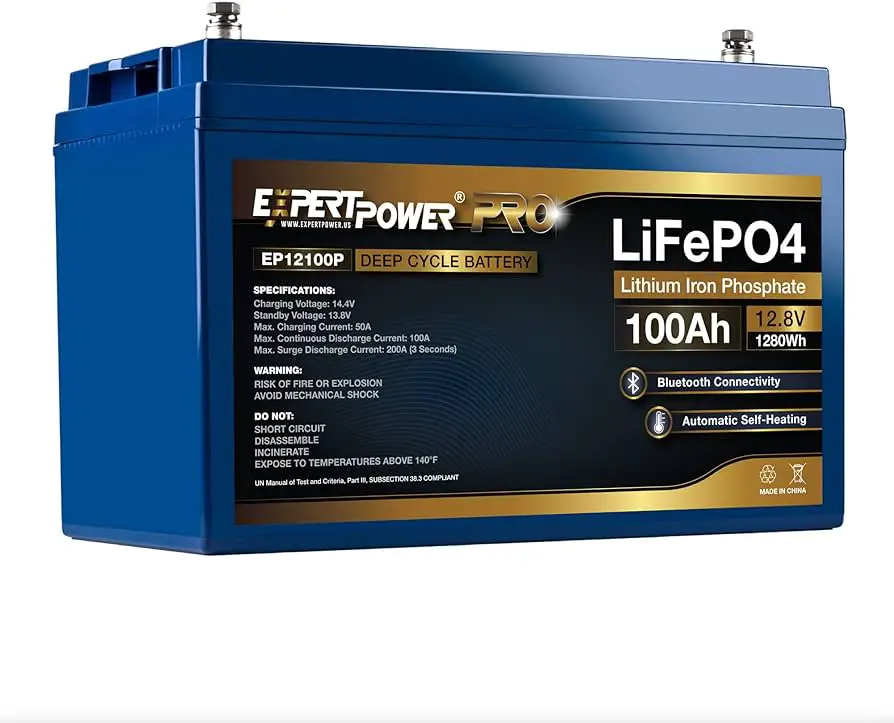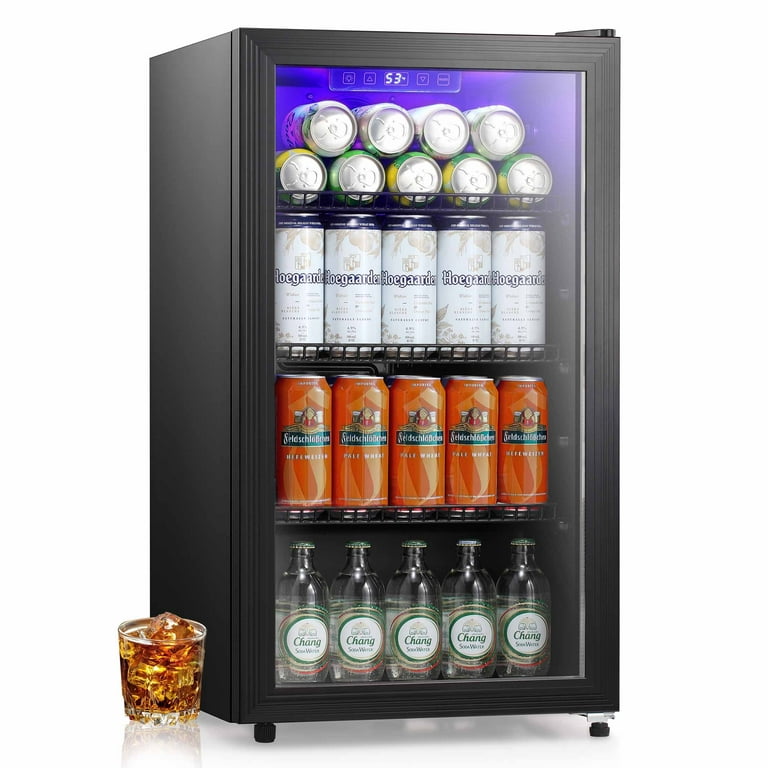To adjust the RV fridge temp, locate the temperature control dial inside the fridge compartment. Adjust according to desired temperature by turning the dial.
When adjusting the RV fridge temperature, it’s important to ensure proper functioning for preserving your food during your travels. Proper temperature settings will help maintain the freshness of your food items and prevent spoilage while on the road. By following simple steps and monitoring the temperature setting, you can effectively regulate the RV fridge temperature for a hassle-free and enjoyable trip.
Remember to adjust the temperature as needed depending on external conditions to keep your food items well-preserved throughout your journey.

- Understanding Rv Refrigerator Basics
- Factors Affecting Rv Fridge Temperature
- Determining The Ideal Temperature
- Steps To Adjust Rv Fridge Temperature
- Additional Tips For Fridge Temperature Maintenance
- Troubleshooting Common Temperature Problems
- Benefits Of Proper Rv Fridge Temperature
- Conclusion And Final Considerations
- Frequently Asked Questions Of How To Adjust Rv Fridge Temp
- Conclusion
Understanding Rv Refrigerator Basics
Learn about the basics of RV refrigerators and how to adjust the temperature for optimal performance. Understanding RV fridge temp adjustments is crucial for keeping your food fresh and your RV running smoothly. Mastering these basics will enhance your overall RV experience.
Understanding RV Refrigerator Basics RV refrigerator temperature adjustment is essential for keeping your food fresh during your road trips. Knowing how your RV fridge works and the importance of proper temperature adjustment can ensure a stress-free and efficient camping experience.How Rv Refrigerators Work
RV refrigerators utilize a combination of electricity, propane, and sometimes battery power to cool the interior. These absorption refrigerators do not have moving parts, making them ideal for your mobile adventures.Importance Of Proper Temperature Adjustment
Maintaining the correct temperature in your RV refrigerator is vital to prevent food spoilage and ensure food safety. Incorrect temperatures can lead to bacterial growth and compromise the quality of your stored items. Adjusting the temperature settings according to the type of food you’re storing is crucial. Be sure to follow manufacturer guidelines for recommended temperature ranges to optimize cooling efficiency and food preservation. Regularly monitoring the internal temperature with a thermometer can help you identify any fluctuations and make necessary adjustments promptly. Keeping your RV fridge at the right temperature will enhance the lifespan of your appliance and keep your food fresh longer. Implementing these simple yet effective measures can make a significant difference in the functionality and longevity of your RV refrigerator.
Credit: www.fulfillingtravel.com
Factors Affecting Rv Fridge Temperature
Ambient Temperature
Keep in mind the outside temperature impacts internal fridge temperature.
Leveling Of The Rv
Ensure your RV is properly leveled to prevent uneven cooling in the fridge.
Ventilation And Air Circulation
Proper airflow is crucial for maintaining a consistent fridge temperature.
Determining The Ideal Temperature
Determining the Ideal Temperature for your RV fridge is crucial for preserving your food and ensuring the efficiency of the appliance. It’s essential to know the recommended refrigerator temperatures and understand freezer temperature to keep your perishables fresh without compromising energy consumption.
Recommended Refrigerator Temperatures
For safe food storage, the ideal refrigerator temperature for your RV fridge is 40°F (4°C) or lower. This temperature range prevents bacteria from multiplying and extends the shelf life of your food items. To maintain this temperature, regularly use a refrigerator thermometer to monitor the internal conditions.
Understanding Freezer Temperature
When it comes to the freezer temperature, it’s important to keep it at 0°F (-18°C) or lower to ensure your frozen goods remain safe and maintain their quality. By maintaining this temperature, you can prevent the formation of ice crystals on frozen food, which can compromise its texture and taste.
Steps To Adjust Rv Fridge Temperature
Adjusting the temperature of your RV fridge is an essential skill to ensure that your perishable food items stay fresh during your travels. By following a few simple steps, you can easily adjust the temperature to your desired level.
Locating The Temperature Controls
To begin, you first need to locate the temperature controls on your RV fridge. The exact location of the controls may vary depending on the make and model of your fridge, but they are typically found either inside the fridge or on the exterior.
If the temperature controls are located inside the fridge, they are usually located at the upper or lower part of the compartment, either on the wall or the ceiling. Look for buttons or a dial labeled with temperature indicators such as “Colder” and “Warmer”.
On the other hand, if the temperature controls are located on the exterior of the fridge, you may need to open a panel or remove a cover to access them. Once you find the controls, they are typically marked with temperature settings or symbols.
Safe Adjustments To Prevent Damage
Before making any adjustments, it’s important to remember that drastic temperature changes can put unnecessary strain on your fridge’s cooling system. It’s best to make gradual adjustments, allowing the fridge to stabilize before making additional changes.
When adjusting the temperature, start by pressing the “Colder” button or turning the dial to a lower setting if you want to decrease the temperature. To increase the temperature, press the “Warmer” button or turn the dial to a higher setting.
Pro tip: It’s advisable to wait at least six hours before checking the temperature again after making adjustments, as the fridge needs time to reach the new temperature.
Additional Tips For Fridge Temperature Maintenance
Maintaining the temperature of your RV fridge is essential for food safety. Here are some additional tips to ensure your fridge stays at the right temperature for optimal performance.
Proper temperature maintenance is crucial to ensure the longevity and efficiency of your RV fridge. In addition to adjusting the temperature, there are a few other things you can do to ensure your fridge is functioning optimally. Here are some additional tips for fridge temperature maintenance:
Regular Cleaning And Defrosting
Regular cleaning and defrosting are essential for keeping your RV fridge in top condition. Over time, dust, dirt, and ice buildup can prevent the fridge from operating efficiently, leading to temperature fluctuations. To clean your fridge, follow these steps:
- Remove all food items and store them in a cooler or alternate fridge.
- Unplug the fridge from the power source.
- Wipe down the interior using a mild detergent and warm water. Be sure to clean the shelves, door seals, and any other surfaces.
- Rinse the interior with clean water and dry it thoroughly.
- To defrost the freezer, remove any ice buildup by gently scraping it off or using a hairdryer on a low heat setting.
- Once the fridge is clean and defrosted, plug it back into the power source and allow it to cool down before restocking.
By regularly cleaning and defrosting your RV fridge, you can prevent excess ice buildup and maintain more consistent temperatures.
Checking Door Seals
Another important aspect of fridge temperature maintenance is regularly checking the door seals. The door seals are responsible for keeping the cold air inside the fridge, ensuring it stays cool. Over time, the seals can become cracked, worn out, or loose, compromising the fridge’s ability to maintain temperature. To check the door seals, follow these steps:
- Close the fridge door and inspect the seals for any visible signs of damage or wear.
- Place a dollar bill between the seals and the fridge door, and close the door.
- Attempt to pull out the dollar bill. If it comes out easily, the seals may need to be replaced as they are not creating a tight seal.
- If you notice any issues with the door seals, you can purchase replacement seals from an RV parts store and follow the manufacturer’s instructions to install them properly.
Regularly checking and maintaining the door seals can help prevent cold air leaks and ensure your RV fridge remains at the desired temperature.

Credit: www.amazon.com
Troubleshooting Common Temperature Problems
Adjusting your RV fridge temperature can be a bit tricky, and you may encounter some common temperature problems along the way. Understanding these issues and their solutions can help you keep your RV fridge running smoothly.
Fridge Not Cooling Sufficiently
If your RV fridge is not cooling sufficiently, there are a few potential causes to consider:
- Check for proper ventilation behind the fridge and make sure the vents are not blocked.
- Inspect the door gasket for any signs of wear or damage.
- Ensure the RV is level, as an unlevel RV can affect the fridge’s cooling ability.
Fridge Freezing Everything
On the other hand, if your RV fridge is freezing everything, you might need to address the following issues:
- Adjust the fridge’s temperature settings to a warmer setting.
- Clean the condenser coils to improve airflow and prevent the fridge from overcooling.
- Check the thermostat for any malfunctions or calibration issues.
By troubleshooting these common temperature problems, you can ensure that your RV fridge maintains an optimal temperature for storing food and beverages during your travels.
Benefits Of Proper Rv Fridge Temperature
Food Safety
Maintaining appropriate RV fridge temperature prevents food spoilage and bacterial growth.
Ensuring food stays fresh increases the safety of your meals on the road.
Energy Efficiency
Optimal fridge temperature reduces energy consumption, saving power when traveling.
Efficient cooling extends the lifespan of your RV fridge and battery.

Credit: www.walmart.com
Conclusion And Final Considerations
Discover how to effortlessly adjust the temperature of your RV fridge with these helpful tips. Ensure your food stays perfectly chilled while on the road, making your camping experience even more enjoyable.
Summary Of Key Points
Adjusting RV fridge temperature is crucial for safe food storage during your travels.
Follow these steps:
1. Turn the control knob clockwise to lower temperature
2. Use a fridge thermometer to monitor the temp regularly.
Importance Of Temperature Monitoring
Temperature control prevents food spoilage during road trips.
Regular monitoring ensures food safety and freshness while on the go.
Frequently Asked Questions Of How To Adjust Rv Fridge Temp
What Is The Ideal Temperature For An Rv Fridge?
The ideal temperature for an RV fridge is between 37 and 40 degrees Fahrenheit (3 to 4 degrees Celsius). This temperature range ensures that your food stays fresh and prevents bacteria growth.
How Can I Adjust The Temperature Of My Rv Fridge?
To adjust the temperature of your RV fridge, locate the temperature control knob inside the fridge. Turn the knob clockwise to decrease the temperature and counterclockwise to increase it. Make small adjustments and wait a few hours for the temperature to stabilize before making further changes.
What Can Cause The Rv Fridge To Not Cool Properly?
Several factors can cause an RV fridge to not cool properly, including inadequate power supply, dirty condenser coils, a faulty thermostat, or improper ventilation. Check these components and ensure they are functioning correctly to troubleshoot cooling issues.
Why Is My Rv Fridge Too Cold Or Freezing Food?
If your RV fridge is too cold or freezing food, it may be due to a faulty temperature control thermostat or an incorrect temperature setting. Check the temperature control setting and adjust it to a higher temperature. If the problem persists, consider replacing the thermostat.
Conclusion
Adjusting the temperature of your RV fridge is crucial for keeping your food fresh while on the road. By following the simple steps and monitoring the temperature regularly, you can ensure that your fridge operates efficiently. With the right temperature settings, you can enjoy your travels without worrying about spoiled food.